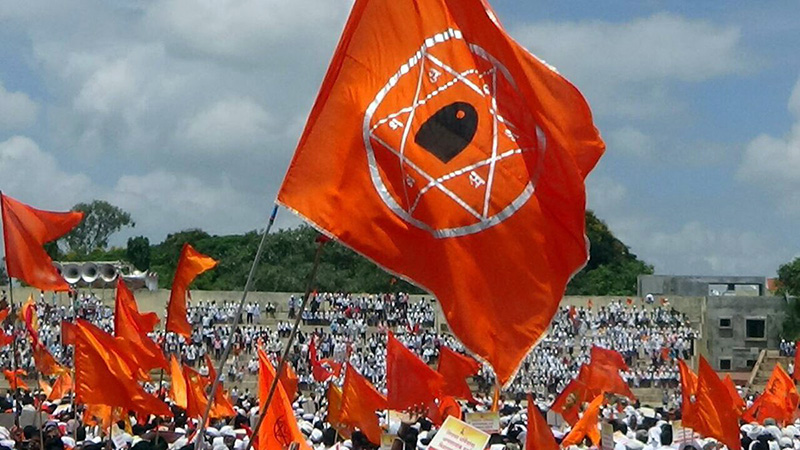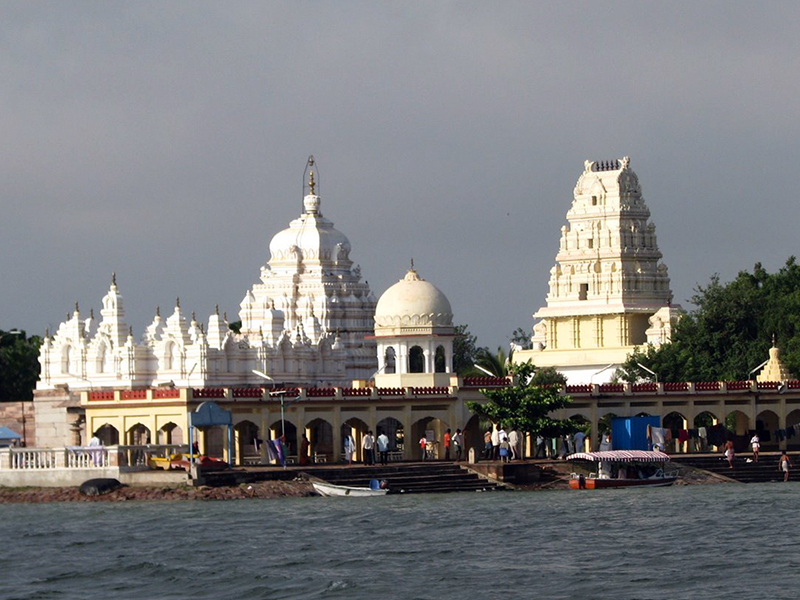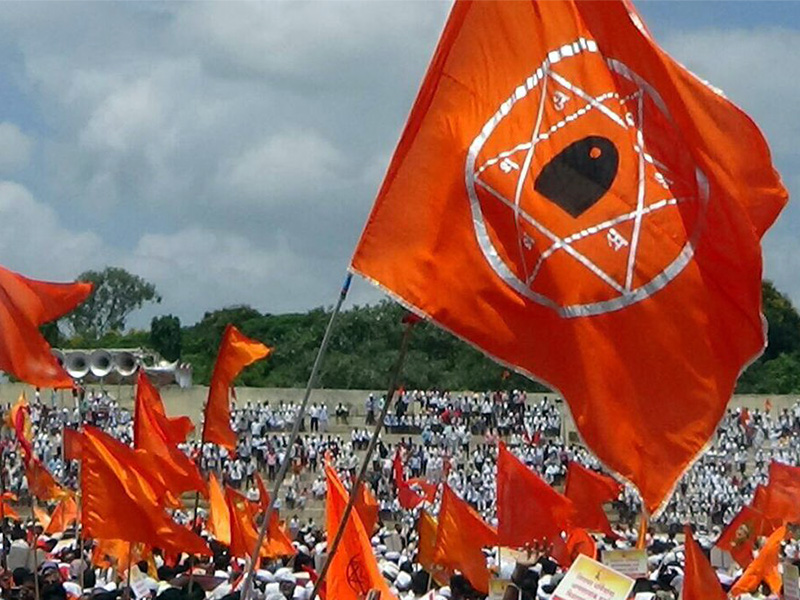
Lingayat flags are carried during a rally. Photo via @Lingayatas/Twitter
MUMBAI (RNS) — For decades, adherents of Lingayat Dharma, an 800-year-old tradition with some resemblance to Hinduism, have lobbied the Indian government to declare it separate from the dominant religion on the subcontinent.
This week, the Congress Party that rules the state of Karnataka — in which the Lingayats are most concentrated — granted them the status of a minority faith.
[ad number=“1”]
“The whole religion started as a revolt and protest against Hindu orthodoxy,” said S.M. Jamdar, general secretary of the Jagatik Lingayat Mahasabha, a group at the forefront of the movement for minority status. “It rose against everything that is Hindu. Therefore it is a separate religion.”

A 108-foot statue of Lingayat guru Basavanna in Basavakalyana, Karnataka, India. It was inaugurated on Oct. 18, 2012. Photo courtesy of Creative Commons
He said Lingayats across the state were “euphoric” about the new recognition, which came after months of rallies for separation that attracted thousands.
Lingayats are also hoping to extend their victory beyond Karnataka State, which lies in the southern part of the country, to all of India. But success nationally is less certain and would require action by the BJP, the party that controls the most seats in India’s Parliament and is aligned with Hindu nationalists.
Some political analysts say granting the Lingayats minority religion status is an attempt by the Congress Party — ahead of elections slated for later this year in Karnataka — to woo the community back. After years of supporting the party, the Lingayats in the more recent past have tended to vote with the BJP. Estimates put the Lingayats at between 10 percent and 17 percent of Karnataka’s population, or as many as 1 million people.
Official religious minority status — also extended to a subgroup of the Ligayats, the Veerashaiva Lingayats — will afford them greater benefits in Karnataka, just as it benefits members of other minority faiths: Muslims, Christians and Jains.
[ad number=“2”]
Among those benefits: more freedom to run their schools, and the ability to reserve half the seats in those schools for members of the community. It will also improve their access to scholarships.
Until 1871 Lingayats were counted as a separate religion in the census, but for the past several decades, they have been counted as Hindus.

Kudalasangama, an important pilgrimage site for Lingayats, is in India’s Bagalkot district. It is where guru Basavanna’s samadhi is located. Photo by Mankalmadhu/Creative Commons
But they are not Hindus, say these followers of the 12th-century philosopher and social reformer Basavanna, because — among other differences — they worship a single god, do not worship at temples and reject the caste system.
“The idea that it is a separate religion has been around in intellectual circles for a very long time,” said Chandan Gowda, a sociology professor at Azim Premji University in Bengaluru, the state capital.
[ad number=“3”]
“There has always been a strong ideological sense of being separate from Hinduism,” he added, and noted as well the pragmatic effects of minority religious status. “But the focus in the demand has been on their religious distinctiveness.”





